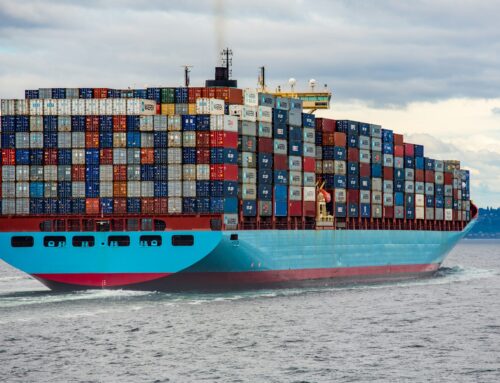Portland, OR – On the eve of a hearing on proposed changes to hydropower operations in the Columbia River basin, conservationists are warning that the proposed changes would weaken the already-anemic effort to recover imperiled salmon and steelhead listed under the Endangered Species Act. Tomorrow’s hearing in Portland is part of a series held by the Northwest Power Planning Council on proposed amendments to its Columbia River Basin Fish and Wildlife Program, which guides the actions of federal dam operators on the Columbia and Snake Rivers.
If adopted, NPPC’s amendments would alter dam operations currently spelled out in the 10-year federal salmon plan issued by the National Marine Fisheries Service in December 2000. In particular, the Power Council is proposing that federal dam operators abandon flow targets designed to improve the survival of young fish migrating to the ocean, despite data which shows clearly that migrating salmon and steelhead survive better at flows at or above current targets. Federal dam operators are supposed to release water from the reservoirs in spring and summer to achieve the flow targets, which results in a small decrease in power generation.
“The Power Council claims that flow targets are not warranted, but there is ample scientific evidence that shows otherwise,” said Rob Masonis, director of American Rivers’ Northwest Regional Office in Seattle, WA “The only problem with the flow targets is the chronic failure of federal dam managers to actually meet them.”
“The Council is proposing to forsake the best in-river protection salmon have to boost system generation by just one-fourth of one percent. The benefit is miniscule, but the cost is considerable and long-term” said Don Sampson, Executive Director of the Columbia River Inter-Tribal Fish Commission.
During the drought year of 2001, dam operators held back water that should have been released for fish to increase the output of hydroelectricity. As a result, only 4% of young Snake River steelhead and only 26% of Snake River spring Chinook salmon survived the journey past eight federal dams, according to federal scientists. The 2001 migration was the deadliest since Snake River salmon were listed under the Endangered Species Act.
“Again the bureaucrats in charge of the river have presented us with a false choice – this time pitting one end of the Columbia basin against the other, between whose fish matter more or whose science is more valid. What we need from them are substantive solutions that will pass the tests of time for the basin as a whole, and these proposals aren’t that by any stretch,” said Alan Moore with Trout Unlimited.
More flow creates stronger currents that help move young salmon to ocean before their energy reserves are depleted. More flow also helps young salmon avoid predators and improves water quality during hot summer months. The Power Council’s recommendations would require that more salmon and steelhead be siphoned from the river and transported around the dams in barges and trucks, a strategy that has failed for over 25 years.
“The Council’s proposal would create a larger financial burden on taxpayers by compromising the federal investment in salmon recovery that has been made in the last two decades.” said Autumn Hanna, Senior Policy Analyst at Taxpayers for Common Sense. “If the Council can’t make common sense decisions for salmon then it’s time the council be reformed.”
The NPPC estimates that its proposed amendments would produce just 41 additional megawatts of electricity, just .05% of Bonneville’s total power supply. The Council has floated trial balloons that the additional $8 to $11 million in additional revenue this generates could be split between the cash-strapped Bonneville Power Administration and other fish and wildlife conservation programs.
“Trading real water when fish need it most for more hydropower is a disservice to salmon, steelhead, salmon-dependent communities, and the citizens of the Northwest,” said Pat Ford executive director of the Save Our Wild Salmon Coalition (SOS). “The Council’s proposal to slash the already-small amount of water for salmon is illegal, scientifically unsound, fiscally wasteful, and contrary to the common-sense wisdom that salmon need water.” SOS is a group of more than 50 business, conservation organizations, commercial and sportfishing associations, river groups, and taxpayer advocates.
Last year, SOS analyzed federal agencies’ success or failure in implementing the federal salmon plan. The results showed that the federal government had largely failed to implement the salmon plan in 2001, its very first year of existence. Moreover the report found that federal agencies received less than half the funding they said was needed to implement the plan in 2001.
The meager funding and lackluster effort that characterize the federal salmon recovery effort to date will come under increased scrutiny when the National Marine Fisheries Service conducts the first of three scheduled “check ins” in September of 2003. These periodic reviews are intended to determine if the recovery measures prescribed in the salmon plan are being carried out and if salmon populations are responding as anticipated. If implementation is insufficient or unsuccessful, removal of the four dams on Snake River will be revisited.
Contact:
Autumn Hanna, TCS, 202-546-8500 x112
Rob Masonis, American Rivers, 206-213-0330
Eric Eckl, American Rivers, 202-347-7550
Amy Leska, SOS, 206-286-4455
Chuck Hudson, Columbia River Intertribal Fish Commission, 503-731-1257














Get Social